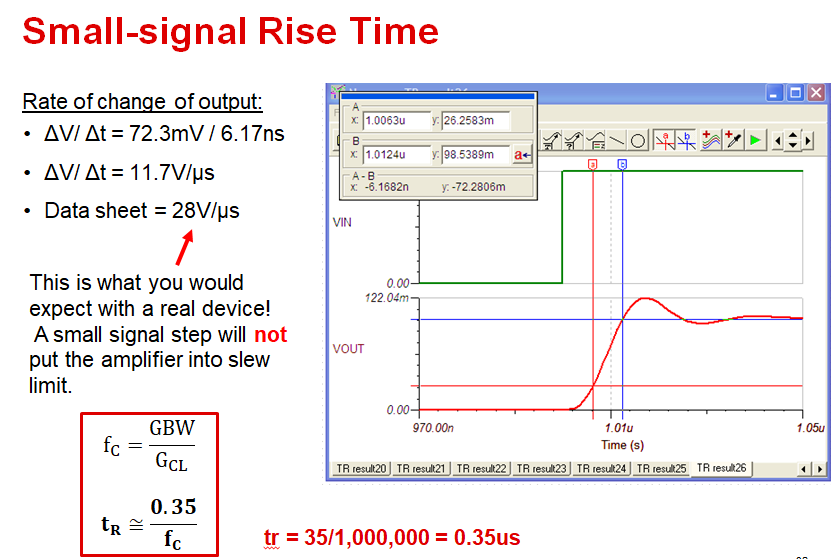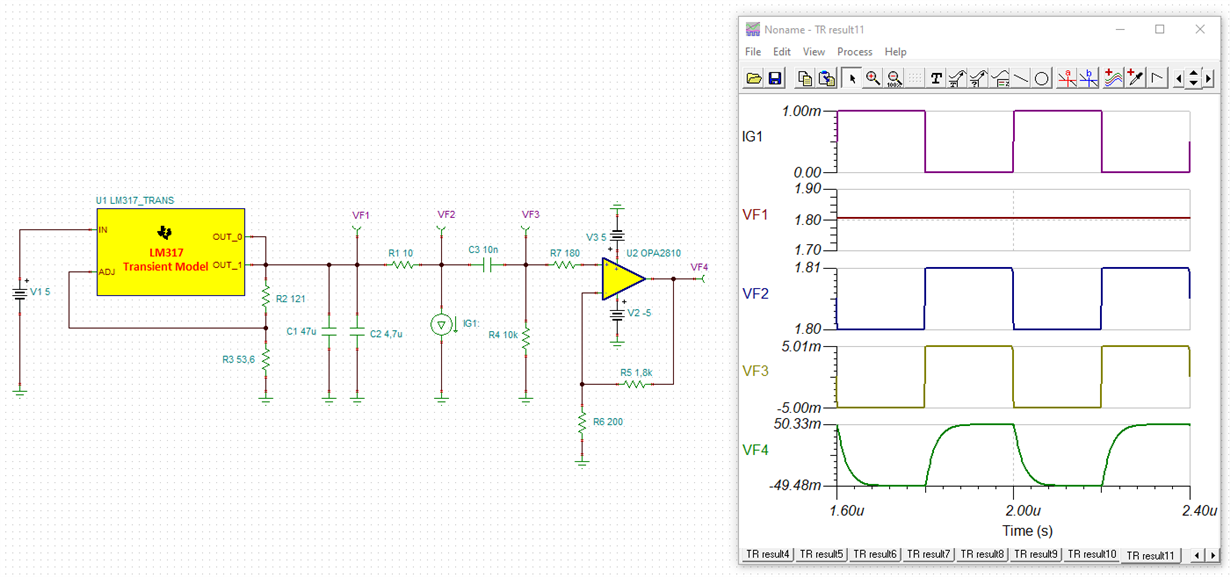Other Parts Discussed in Thread: LM317, OPA2810
Dae Team,
I am trying to make a circuit that will measure the I/P current of a Digital Chip.
The Device is working at 1.8V. The current will vary from 0.5mA to 1mA.
I used a shunt resistor in the path and its' output is connected to an Instrumentation amplifier.
I know that digital chips are AC current sources between their Power and Ground.
May I know will shunt based method work properly for these kinds of currents.
I have done a TINA TI situation and my results are wrong.
Plae find the attached circuit and let me know where I went wrong.
Regards
Hari




